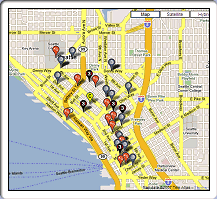Metro Ethernet & Carrier Ethernet over Copper

Carrier Ethernet broadband services like Metro Ethernet and Ethernet over Copper are becoming more and more popular with both carriers and businesses. With the increase of IP traffic as IPTV, Video on Demand, VoIP, Sip trunking and virtual private LAN services, carrier ethernet has become a transport technology of choice. Carrier ethernet provides access to the internet with native ethernet packets, as opposed to circuit based access methods as T1, T3, OC3, OC48 etc. An advantage of being packet based is that carrier ethernet services can support Class of Service (CoS). Carrier Ethernet also supports true multipoint communications. Older WAN technologies as ATM and frame relay offer point-to-point connectivity only. Although Metro Ethernet is often thought to be analogous to Transparent LAN Services, Ethernet can be used as a broadband access technology to point-to-point Layer 2 VPN, Layer 3 VPN, and Internet services.
Carrier Ethernet Broadband pricing
Carrier Ethernet is far more cost effective than traditional internet access methods suchs as bonded T1’s, DS3 and OC3. Please use the form below to see if carrier ethernet services are available in your area, if it is you will be able to compare the pricing point of multiple carrier ethernet providers. Dark fiber and regular fiber routes are also displayed but only after talking to a consultant, same goes for fiber lit buildings.
Ethernet is, quite simply, plugging your network directly into a telecom provider’s network. When you bypass the local phone company you cut out an expensive transport step. Having direct access to customers is a carrier’s goal as it allows them to control the user’s experience from end to end while reducing cost. These savings are passed on to you. It also establish a direct relationship with a provider without the local Bell in the equation. And since the ethernet carrier is in complete control of your connection, it is much easier for them to provide QoS.
Ethernet broadband pricing compared to more traditional access methods:
|
Fast Ethernet ( FastE )
FastE, which stands for Fast Ethernet, is a carrier ethernet form which has 100 Mb /ps Ethernet (100 megabits per second). The original ethernet speed was 10Mbps, thus the term fast ethernet. 10Mb carrier ethernet circuits are very competative for companies that are currently using a 2x bonded t1 which at 3Mbps costs an average of $800. Compare that to the cost of a 10Mb ethernet over copper circuit, which can be as low as $975.
FastE can be used as access method to the internet and is often less expensive than a DS3 which only has a speed of 45Mbps. Carrier Fast Ethernet can also be used to connect two or more LAN’s in different locations. In that case it would be used as an alternative to a private point to point line. MPLS FastE (MPLS stands for MultiProtocol Label Switching) allows the prioritisation of different classes of service. This allows for instance voice and video traffic to have a higher priority than a less time sensitive application such as inventory management. There are several different forms of Fast Ethernet, 100BASE-TX is the most common and runs over two pairs of CAT5, one twisted pair per direction. 10 GigE LAN Phy circuits are also available via the tool above.
Use the form above to see ethernet availability and ethernet lit buildings, plus you will be able to compare pricepoints of different providers and carriers.
